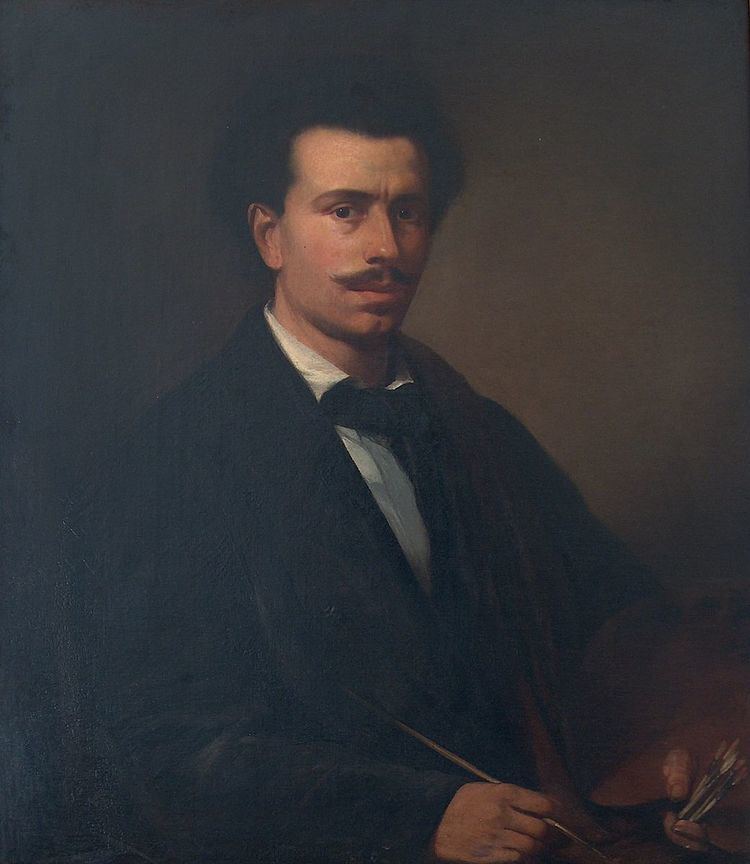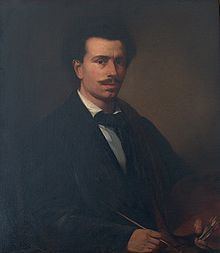Nationality Portuguese Notable work See Gallery [1] | Known for painting Education Academy of Fine Arts Name Jose Rodrigues | |
 | ||
Full Name Jose Rodrigues de Carvalho Born July 16, 1828 ( 1828-07-16 ) Lisboa, Portugal Died February 18, 1887(1887-02-18) (aged 58)Lisboa | ||
Jos rodrigues dos santos escolhia a judite moura guedes 5 para a meia noite
José Rodrigues de Carvalho (Lisbon, July 16 - 1828 — Lisbon, October 19, 1887) was a Portuguese painter.
Contents
- Jos rodrigues dos santos escolhia a judite moura guedes 5 para a meia noite
- Banda marcial da escola jos rodrigues de carvalho
- Early life
- Classmates
- Awards
- Reviews of his work
- Diverse
- Oil paintings
- Oil portraits
- References

Considered his most famous work, O Pobre Rabequista (The poor rabequista), painted in 1855, was first shown in Paris at the Universal Exhibition in 1855 and at the International Exposition of Porto in 1865, where he won the second award.
Banda marcial da escola jos rodrigues de carvalho
Early life
José Rodrigues, son of Apolinário José de Carvalho and Maria Leonarda, was baptised in "São João da Praça" on September 21, 1828, having as godfather José Rodrigues.
José Rodrigues (his homonym) had five brothers and lived at the "Rua dos Bacalhoeiros" in Lisbon, having married in 1863 with D. José Maria Rodrigues, daughter of José Rodrigues da Rocha, having also three children named (António Ribeiro Rodrigues, Teresa de Jesus Rodrigues and Leonor Matilde Rodrigues).
Prior to join the Academy of Fine Arts at (San Francisco Convent) as a volunteer student in 1841, he left an engraving dated of 1840. The existence of a colleague at the Academy also homonym, he officially requested the reduction of its name to "José Rodrigues." At fourteen years of age, in the drawing competition history, he won a prize in a copy of a bas-relief, modelling from student to student. From that time (1842) there still remains an engraving, signed and dated by José Rodrigues.
In 1843, during an exhibition of Works by students, he presented a drawing in bas-relief. In that year, each of the following received an award: Miguel Ângelo Lupi, Angelino da Cruz Castro e Silva, António José Lopes Júnior and Ernesto Gerard. In the academic year of 1845/1846, he entered higher education in the subject of historical painting and won an award. In December 1846, he was attributed another award for a life-model drawing.
Classmates
Some of José Rodrigues’ classmates were João Pedro Monteiro (Monteirinho), Francisco Augusto Metrass, Tomás da Anunciação, Joaquim Pedro de Sousa, António José Patrício, amongst others.
Awards
At the triennial exhibition of 1849, he was awarded with a gold medal by the Queen, Dona Maria II.
At its conference in August 1849, the Academy of Fine Arts awarded José Rodrigues with a gold medal for his painting, Aparição do Anjo S. Gabriel ao profeta Daniel.
At an exhibition, promoted by the Portuguese Industrial Association, José Rodrigues received the Silver Medal with honours.
In 1865, he was nominated “Academic of Merit” at the Academy of Fine Arts’ General Conference.
Throughout his life, against his wishes, he was forced to paint portraits in order to survive; a fact which caused him to become melancholic and given to illness. He gave classes at the Irish-owned "Monastery of Bom-Sucesso" and at the private school, "S. José das Dominicanas de S. Domingos de Benfica", amongst others.
The artist died at his home in Rua dos Bacalhoeiros, Lisbon, on October the 19th, 1887.
Reviews of his work
Diverse
In the contract, José Rodrigues committed himself to the creation of two real-life and full-body paintings of Alexandre Herculano (1810–1877) and Manuel Fernandes Tomás (1771–1822), in memory of their noble life contributions. The contract was signed by the presiding Chairman of the Council, José Gregório da Rosa Araujo and by the artist. The paintings currently exposed in the “Meeting Chamber” of the City Council.
